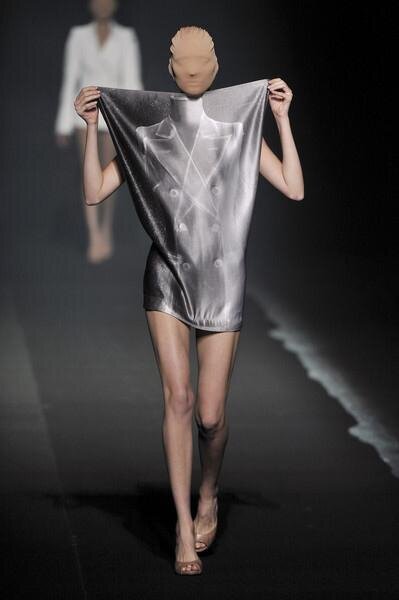Postmodernism in Fashion
Postmodern designer Demna Gvasalia
Veniamin Novozhilov / December 1, 2020
(3 min. read)
With the societal shift, towards postmodernism since the start of the new millennia, the cultural shift of younger generations has led to the new idea of fashion. Long gone are the fitting suits, perfectly tailored shirts and dresses, the ideas of the past stay in the past, and with that, new designers in high fashion world emerge, catching up with the idea and shaping the new world, which we now take for granted.
It all started in the late 1980s, with a prominent Belgium designer Martin Margiela, who thought that everything can be fashion. He was extremely successful in his endeavour and now the name of Margiela is synonymous with high quality deconstructed fabrics and the sense of postmodernity. Ripped jeans, oversized silhouettes, inside out stitching and lack of branding. This and many more other things made Margiela who he is. The idea to make a jacket out of bedsheets, or out of ski gloves, as anything we see, maybe fashion. One of the most well known Margiela items is his sock sweater, which he put instruction on how to make yourself. Currently, Martin doesn’t work for his brand anymore, as he disagreed with creative and business policies of the company which bought out his brand. Martin is an extremely secretive individual, who has no social media accounts, and only a few pictures of him online.
Maison Martin Margiela SS09
In the mid-2010s, the spirit of postmodernism would be rekindled with the fire of a million suns, by a Georgian designer Demna Gvasalia. Demna took a slightly different approach to fashion than Margiela, by creating his brand, VETEMENTS, which translates from French to “Clothes”. The name of the brand was the idea, it doesn’t matter which high fashion brand we buy, it's all just clothes in the end. There is no supra identity surrounding it, clothes are made to be worn, therefore, all the social groups could be mimicked and replicated. That's why VETEMENTS made punk like leather jackets, but also suits and shirts for business-like occasions, which are all twisted in one way or another, which would change the proportions of the person wearing the garment. Extremely oversized hoodies, bombers and everything else, creates a sense of androgynous fashion style, where it's less about a person’s physical appearance. Let the CLOTHES speak, show your social identity, and how the general population tries to put everyone into categories, that being punk, businessman or a hobo. Demna did something new in fashion, he made unfashionable - fashionable. He changed how we see high fashion and what it can stand for. Even the beauty standards to some degree are now different.
Vetements SS20
But what does this all ultimately mean? Do we all become shapeless objects which roam around? No, absolutely not. Fashion is becoming more relevant in the general population. It's becoming more grounded and less serious. Nobody disallowed anyone from wearing tailored suits and perfectly made jackets. They will always stay, and people will always make iterations of them. What is new, is the idea that what can be worn as clothes - can be anything, and that by wearing certain items, we can change the perception of us on the street. You can appear to look like a security guard or as a 2000s rapper.
Postmodernism in fashion changed our outlook on what is considered fashionable to wear, and what we CAN wear. With that, people can dress freer and more openly, as just like art, fashion evolves and brings new ideas as time goes on.






